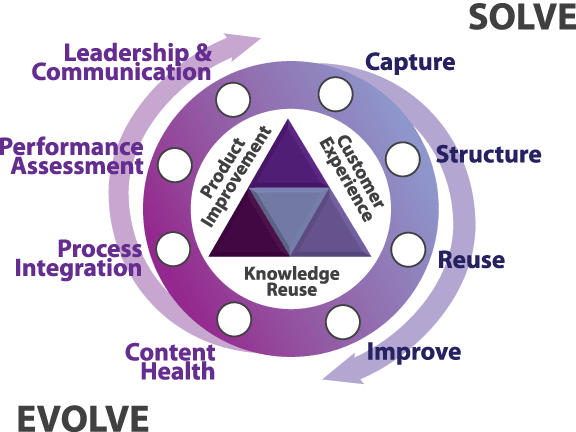When the world shut down and global organizations scrambled to adapt to remote work, Zoom quickly became the technology backbone of modern communication. But behind the scenes of its meteoric rise, Zoom faced a different kind of challenge — one that wasn’t about scaling infrastructure, but about scaling support to match customer preference.
As millions of new users poured in with new customer needs, new questions, and new product usage scenarios, Zoom’s customer support team found itself at an inflection point. Traditional support methods like email and phone could no longer keep pace. Zoom needed more than a band-aid — it needed a bold, intelligent customer experience transformation.
In a recent conversation with Alex Dassa, VP of Business Value and Global Enablement at Coveo, Jeff Harling, Head of Global Digital Customer Experience at Zoom, shared a behind-the-scenes look at how the company rebuilt its customer support engine around AI, intelligent search, and a scalable content strategy — and the results that followed.
The Pre-Transformation State: A Reactive Support Model
“When I first joined Zoom,” Harling said, “there wasn’t a self-service strategy in place. If you needed help, you sent an email or made a phone call.”
This model had worked in Zoom’s earlier days, when the product and customer interaction was smaller and more narrowly focused. But when the pandemic hit and Zoom became a global essential, the limitations of a reactive support model became clear almost instantly.
The growth wasn’t just in users — it was in product complexity. Zoom was evolving from a single product offering into a broader communication platform that included Zoom Phone, Zoom Team Chat, Zoom Contact Center, and the AI Companion. Each new feature introduced new support requirements and added complexity to the customer journey.
To meet this moment, Harling and his team decided to rethink support as a digital-first experience — one that empowered users to find answers on their own and reduced the need for human intervention. This would not be a simple tooling update — it was the beginning of a full-scale digital transformation.
Rooting Customer Experience Strategy in Content, Relevance, and Context
The team’s first step was to put the customer at the center of the experience — not the channel or the product. Harling emphasized three core priorities that became foundational to the new support strategy:
First, Zoom invested in a strong knowledge management practice. Drawing on principles like Knowledge-Centered Support (KCS), the company focused on building a content library that was accurate, dynamic, and wide-reaching. The goal was to provide trusted answers to the most common and complex questions across Zoom’s growing product line.

Second, the team understood the critical role of search. “We know that about 60 to 70% of our users start with a search query,” Harling said. Zoom was keenly aware that if they don’t get that initial moment with search right, that customer’s frustration only grows.
To get it right, Zoom deployed Coveo’s AI-Relevance Platform across their digital ecosystem, including their support website, developer documentation, and marketing properties. This created a unified search experience, surfacing relevant content regardless of where a user started their journey or where that content was originally stored.
Third, the team built conversational interfaces through chatbots and community forums, offering users more pathways to support — each embedded with intelligent answers and recommendations, supported by the same AI engine.
The result was a connected digital support experience that empowered users to find what they needed quickly and reliably. Upon initially implementing the Coveo platform sans generative AI, Zoom achieved a 2.3x increase in case deflection.
But this was just the beginning when it came to Zoom’s experience transformation.
Relevant reading: 6 Proven Techniques for Customer Self Service Success
Meeting Customer Expectation with Intelligence: From Search to Satisfaction
Once intelligent search was live across the support landscape, Zoom began to see real results.
“It has been nothing but a very positive journey for us,” said Harling. “We’ve seen amazing results from this platform that have nearly doubled our satisfaction scores over the last four years.”
These results weren’t just the byproduct of better content — they were a result of better relevance. With Coveo, Zoom delivers more accurate results by understanding user intent, ranking the most helpful content, and learning from customer behavior over time. Coveo’s AI continuously optimizes itself, which meant Zoom’s support experience kept improving without requiring a complete overhaul.
More importantly, it gave users confidence that they could find what they needed on their own — without having to call or wait.
This shift from reactive to proactive support wasn’t just operationally efficient. It was transformational for Zoom’s digital customer experience.
Delivering Personalized Experience With Generative AI
When generative AI began to enter the mainstream, Zoom already had the foundational elements in place. With a strong content backbone, intelligent search infrastructure, and a consistent self-service experience, the company was well-positioned to take the next step.
Harling noted that generative AI isn’t magic — it depends on the content that fuels it. “One unsung hero of the GenAI revolution is, of course, content,” he said. “You can’t deliver accurate, helpful generative responses without a deep, well-organized content library behind it.”
Zoom doubled down on its content strategy, ensuring full coverage across all product areas. The team created FAQs, documented break/fix scenarios, and implemented mechanisms for capturing new issues in real-time. Their contact centers were equipped to feed emerging problems into the knowledge base so that the self-service layer could adapt quickly.
This content agility was critical in enabling the next phase of their customer experience transformation: implementing Coveo’s Relevance Generative Answering.
Relevant reading: Getting Started with GenAI in Digital Self Service
Real-World Impact of Generative AI
Zoom began by rolling out RGA to half of its support website traffic. They saw immediate results, on top of what had been initially achieved with the fundamentals of the Coveo platform.
“We saw a 20% increase in case deflection almost right away,” Harling shared. “It was an easy decision to roll it out universally.”
With RGA, Zoom’s users could ask questions conversationally — just as they would in a live chat or support call — but receive instant answers generated by AI, grounded in the most relevant and trusted content available.

These weren’t just generic responses. RGA leveraged Zoom’s unified content index to generate rich, personalized answers tailored to user intent, reducing confusion and eliminating unnecessary steps.
This improvement in experience translated into hard metrics. In addition to the case deflection boost, Zoom saw an 11% year-over-year increase in customer satisfaction. In the world of digital support, where CSAT is notoriously difficult to move, double-digit growth is rare — and indicative of meaningful, systemic improvement.
“To see just a few points of movement in CSAT is impressive,” Harling said. “But to see something in double digits — and still growing month over month — is remarkable.”
Elevating the Agent Experience
While self-service on the customer side was a major success, Zoom knew this was just half of the customer service story. Employee experience — customer service agents, success managers, knowledge creators — has a direct impact on what a customer relationship and loyalty.
To address this, Zoom extended its use of Coveo to support agents as well. Now, more than a thousand agents have access to the same AI search that enhances self-service. When a case comes in, agents are immediately presented with relevant content, previous tickets, customer data, and valuable insights to help them resolve the issue faster and more confidently.
“If a customer isn’t successful in self-service and falls through to a live agent, that agent is using both our universal knowledge base and leveraging AI,” Harling said. “They’re using those AI capabilities to then infer, based on an aggregation of both internal and external sources, a better solution to our customers in real time.”
And, according to Harling, that solution creation is the basis for new knowledge shareable via self-service. Harling described this as a full-circle knowledge system — where content captured in support conversations becomes part of the knowledge base, enriching the self-service experience and ensuring continuous improvement across the support ecosystem.
What’s Next: Agentic AI and the Future of Exceptional Customer Experience
Zoom isn’t finished. The next stage in its customer experience transformation is already underway.
The company is now exploring agentic AI — intelligent systems that can act autonomously on behalf of users or agents, orchestrating tasks across internal teams, surfacing customer insight, and providing deeper context into every interaction.
“With agentic AI, we’ll soon be able to understand everything about the customer,” Harling explained. “Their history, their prior tickets, their account type, sales conversations — and deliver answers based on that full picture.”
This next phase is about turning support into a strategic advantage, where personalized interactions are faster and more intelligent.
Successful CX Transformation Takeaways for Digital Support Leaders
Zoom’s successful customer experience transformation is a compelling example of what’s possible when enterprises treat support not as a cost center, but as a growth enabler. By focusing on the user journey, building a scalable content and search infrastructure, and staying ahead of emerging AI technologies, Zoom has set a new standard for digital customer support.
Other organizations looking to build a better customer experience can take several lessons from Zoom’s approach:
- Content is critical. AI is only as effective as the information it draws from.
- Relevance matters. Intelligent search drives better outcomes than static navigation.
- EX informs CX. Agent tools must be as advanced and intelligent as customer-facing tools.
- Transformation is ongoing. Each success sets the stage for what’s next.
Zoom’s journey shows that scaling support isn’t just about doing more with less — it’s about doing better at scale. And in today’s digital landscape, that’s exactly what customers expect.
Learn all about the improvements and outcomes of Zoom’s customer experience transformation journey in the full case study, available for free on our website. Sang your copy today!
Dig Deeper
Want to learn more about Zoom’s roadmap to exceptional experience in their own words? Check out our 45-minute TSIA session, where experts from Zoom, TSIA, and Coveo unpack how Zoom built and scaled its AI-powered self-service experience — from foundational knowledge management to advanced automation and generative AI.


